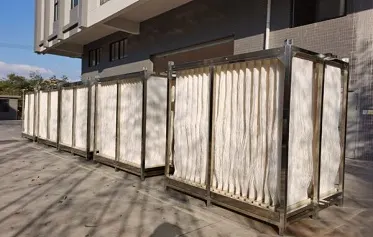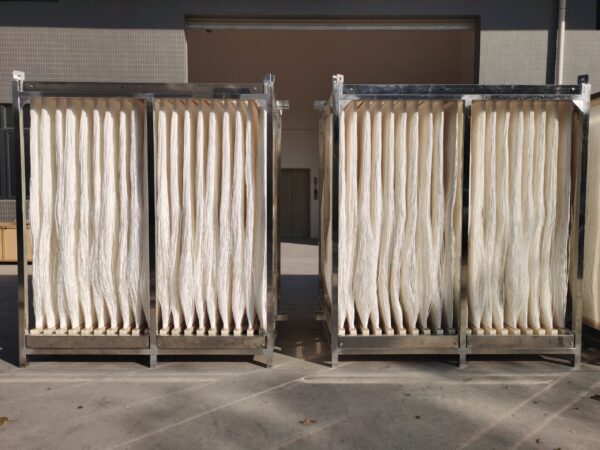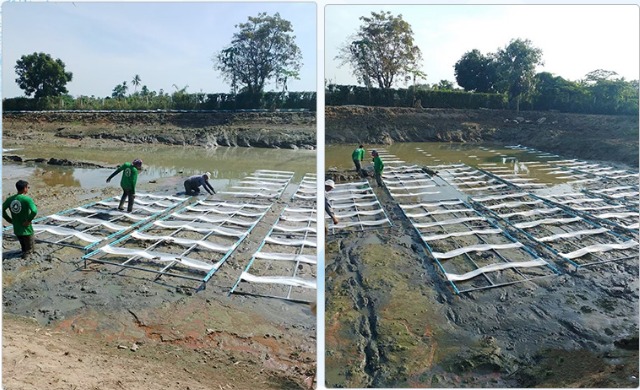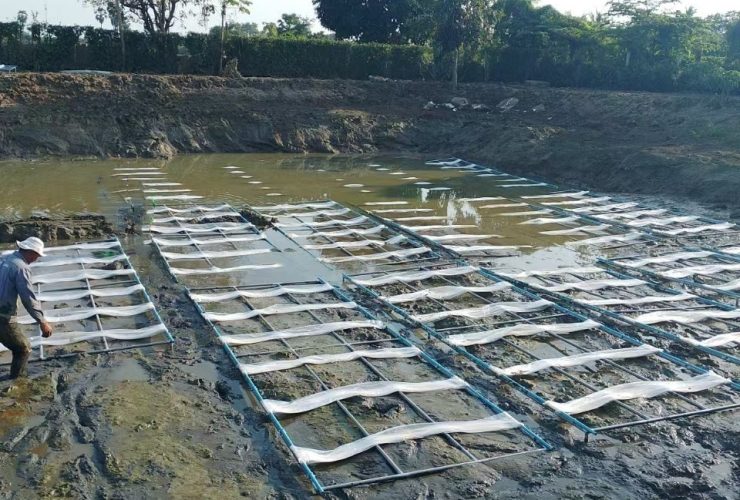Wastewater Treatment Plant: Importance, Types & Applications
A wastewater treatment plant is the heart of modern sanitation, ensuring that sewage and industrial effluent are cleaned before being returned to the environment. Wastewater contains contaminants such as those posing risks to health and ecology, like at household level, raw water sources as well as industrial discharge.
With the evolution of water treatment systems, we now have compact package water treatment plants and advanced membrane for wastewater treatment technologies like Membrane Bioreactor (MBR) systems. As one of the trusted wastewater treatment plant manufacturers, Oxymo Technology is setting high standards for efficiency, sustainability, and innovation.
Understanding a Wastewater Treatment Plant
A wastewater treatment plant cleans water so it can be safely discharged or reused. It removes solids, toxins, nutrients and pathogens through the use of mechanical, biological and chemical processes.
Wastewater generators:
- Household wastewaters-These are kitchens, bathrooms and laundry.
- Industrial wastewater – Factory, refineries and manufacturing-plant waste water.
- Stormwater runoff- Rainwater dragged by soil, trash, debris and pollutants.
The reason it matters:
- Safeguards against the pollution of oceans, rivers and lakes.
- Achieves environmental compliance.
- Enhances the reuse of water and sustainability.
Importance of Wastewater Treatment
Wastewater treatment is critical towards safeguarding human health, saving nature and recovery of resources.
Health Protection
- Untreated: Assassin like diseases such as cholera, typhoid, hepatitis, and dysentery are transmitted so fast.
- With treatment: removal of pathogens, safe disposal and or reuse.
Environmental Conservation
- Minimizes chemicals and toxic accumulation in water ecosystems.
- Stimulates biodiversity and ecosystem equilibrium.
Resource Recovery
- Water reuse: To be used to irrigate, in cooling systems and around the house.
- Nutrients: They are made into fertilizers in Agriculture.
- Energy: produced through sludge anaerobic digestion.
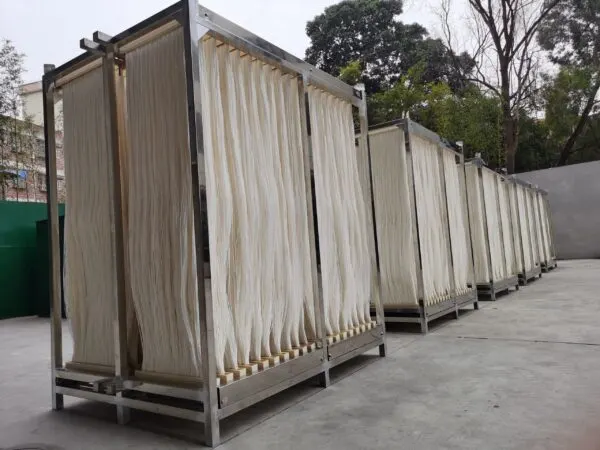

Detailed Stages of Wastewater Treatment
Here are the stages of wastewater treatment plants:
Stage 1: Preliminary Treatment
Removes large debris that can damage equipment.
- Screening for plastics, rags, and wood.
- Grit chambers remove sand and small stones.
Stage 2: Primary Treatment
Separates solids from wastewater through settling.
- Heavy solids sink to form sludge.
- Grease and oils are skimmed and are floated.
Step 3: Secondary Treatment
Degradation of organic matter uses biological processes.
- Activated sludge systems are used to tackle untreated sewage and allow it to be aired, stimulating the activity of microbial growth.
- During clarification, treated water is separated by clarifiers in order to leave behind its solids.
Stage 4:Tertiary Treatment
Advanced purification for high-quality effluent.
- Membrane for wastewater treatment removes fine particles and pathogens.
- Ideal for water reuse applications.
Stage 5: Disinfection
Kills remaining harmful microorganisms.
- Chlorination
- Ultraviolet (UV) light
- Ozone treatment
Stage 6: Sludge Treatment
Processes solid waste from earlier stages.
- Thickening and dewatering.
- Anaerobic digestion to produce biosolids or energy.
Modern Technologies: MBR Wastewater Treatment
Membrane Bioreactor (MBR) technology combines biological treatment with membrane filtration.
Advantages:
- Compact design requires less space.
- High-quality effluent suitable for reuse.
- Low sludge production and minimal odor.
- Energy-efficient and easily automated.
Oxymo Technology’s MBR Systems are built for durability, cost-efficiency, and customization across municipal, industrial, and decentralized applications.
Visit Product Page here: Oxymo MBR Waste Water Treatment
Types of Wastewater Treatment Plants
- Municipal Plants – Treat sewage from residential and commercial areas.
- Industrial Plants – Designed for specific industrial effluents.
- Package Water Treatment Plants – Prefabricated units ideal for small or remote locations.
- Decentralized Systems – Localized treatment units for small communities or single facilities.
Applications of Wastewater Treatment Systems
- Municipal sewage networks.
- Food & beverage processing facilities.
- Textile and dyeing industries.
- Hospitals and healthcare centers.
- Residential complexes.
- Power generation plants.
Cost Factors of Wastewater Treatment Plants
Initial Investment
- Determined by plant capacity, chosen technology, and level of customization.
Operational Costs
- Energy consumption.
- Chemical usage.
- Labor and routine maintenance.
Return on Investment
- Water saved to be reused long term.
- Reduced fines on the environment.
- Sludge energy recovery.
Sustainment to Live a Longer Life
- Regular pump, aerator and membrane checks.
- Removal of sludge at the right time before any blockages occur.
- Frequent monitoring of water quality to deliver on the standards.
- To ensure the efficiency of MBR systems, scheduled membrane cleaning is to be carried out.
Industrial Wastewater Recycling Real-World Case Study
A cultural textile plant in Southeast Asia has collaborated with Oxymo Technology to put in place an MBR system.
Results:
- Saved 60 percent of water in recycling.
- Reduce operations by 25 percent.
Compact design meant that the speed of installation was high with no significant change of infrastructure.
Environmental Benefits
- Saves on natural fresh water.
- Reduces the number of pollution loads into rivers and oceans.
- Allows recapturing of the nutrients to make fertilizers.
Why Choose Oxymo Technology?
Selecting an effective wastewater processing ally means the distinction between smooth ongoing operation and endless time-wasting repairs. Oxymo Technology is a unique player in the market due to the fact it has been dealing in reliable, high-quality, and future-proof solutions.
Reasons why Oxymo Technology is the preferred choice:
- Proven Experience and Expertise – Oxymo has years of experience and knows how to address the particular issues of each of those spheres as they are typically different in the municipal, industrial and decentralized sectors of work. Because of this profound understanding, they can execute systems which are effectively efficient on the first day of operation.
- Advanced Technology Integration – Oxymo invests in cutting-edge membrane for wastewater treatment solutions like MBR, ensuring high performance, low maintenance, and compliance with stringent environmental standards.
- Customized Solutions for Every Need – Whether it’s a large-scale city sewage system or a compact package water treatment plant for a remote facility, Oxymo tailors its designs to fit the exact capacity, water quality, and budget requirements.
- Sustainability at the Core – All designs are geared towards energy efficiency, minimal production of sludge, and maximum water reuse so that clients can cut down on operating costs as they achieve the environmental objectives.
- Geek is Universal, Local Support is Good Too – Although globally their technologies pass their performance marks, Oxymo can offer good local support as well in terms of technology installation, training and care.
- End-to-End Service – Everything between the design of the concept to commissioning, operator training and long term technical support, Oxymo delivers headache-free service to its clients.
In short, partnering with Oxymo Technology means getting a wastewater treatment solution that is robust, efficient, and future-proof.
Conclusion
A wastewater treatment plant is an essential facility for protecting human health, conserving resources, and maintaining environmental balance. With advanced water treatment systems like MBR, offered by Oxymo Technology, organizations can achieve top-quality water reuse while reducing operational costs.
Whether for municipalities, industries, or residential projects, modern solutions like membrane for wastewater treatment are the key to a cleaner, sustainable future.
Frequently Asked Question’s
What is better about using MBR than the conventional systems?
Membrane Bioreactor (MBR) process is more effective as compared to the conventional wastewater treatment solutions since it both integrates a biological treatment of wastewater and membrane filtration. This makes the water quality high and compact designs.
- It generates crystal-clear effluent which can be reused.
- Takes smaller space as compared to the conventional plants.
- Enables automated operation to save on manpower.
- Produces less sludge, which reduces the costs of disposal.
How often should wastewater treatment plant equipment be serviced?
Regular servicing is crucial for ensuring that a wastewater treatment plant runs smoothly and meets compliance standards.
- Regular checkups of the pumps, aerators and membrane health on monthly basis.
- Water testing to determine that discharge is as per regulation on quarterly basis.
- Replacing worn out parts and cleaning the tanks on an annual basis through major maintenance.
- Have back up parts that can be used in case of wear and tear to reduce downtime.
Can wastewater be used to irrigate?
Yes, wastewater can be reused safely as irrigation water by treating it to the level that is required of it by the water quality guidelines of the agricultural industries. This is a prevailing habit in areas that are arid.
- It gives a source of sustainable water to agriculture.
- Less stress on the freshwater resources.
- Enriches the soil, thereby cutting down use of fertilizers.
- He/she needs to meet local reuse requirements in order to be safe.
What is the life of an MBR membrane?
MBR membrane can last many years when well taken care of and thus proves to be a cost effective, long-term investment.
- Normal life span: 7-10 years when cleaned.
- Performance of the membranes is to be monitored singly per month.
- There should be proper aeration to avoid fouling thus increasing life.
- Clean and maintain the machine according to schedule given by the manufacturer.


